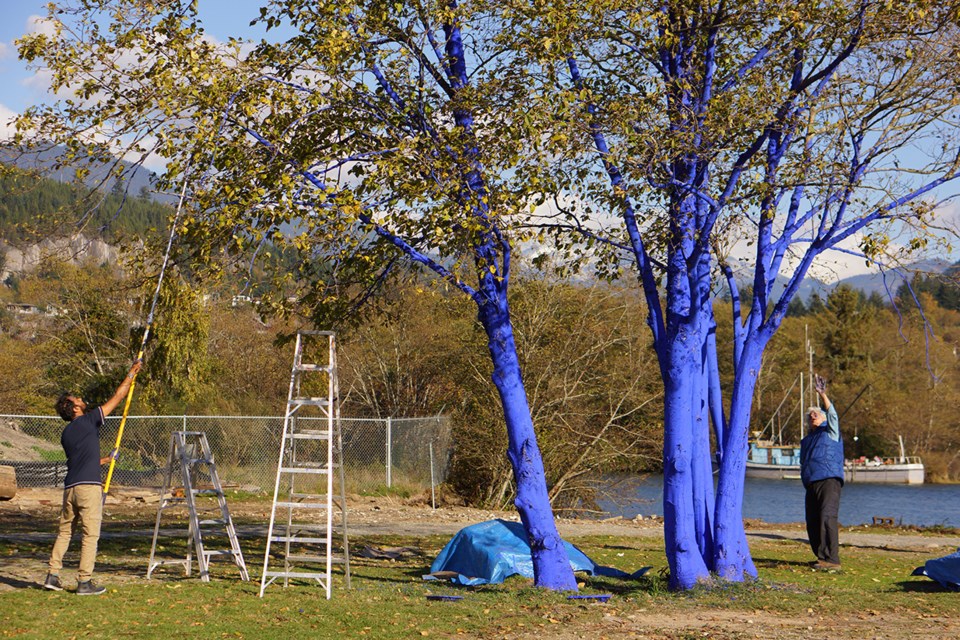The Blue Trees installation got underway the morning of Oct. 22, though it was a little less ambitious than original plans suggested.
While there had been talk the project would involve schoolchildren to help colour as many as 50 to 100 trees spread through downtown with blue pigment, the actual site involved a small stand near the water at Loggers Lane and Victoria. The pigment could take a few months to wash off depending on weather conditions.
A few volunteers were on site with brushes and rollers in hand to help Australian artist Konstantin Dimopoulos and Ammar Mahimwalla, project coordinator for Biennale Vancouver, colour the trees.
“It’s kind of celebrating the tree. We’re actually making the tree the star for a few minutes,” Dimopoulos said.
The project has generated its share of controversy over questions around its concept as well as the cost to district council. At a meeting earlier this month, district council passed a motion to approve the $7,500 for the installation.
Documents obtained by the Squamish Chief show that the final budget for the entire Squamish portion of the Biennale, which started in 2014, stands at $66,837.
The Blue Trees represents the third and final installment of three public art pieces for Biennale Vancouver.
“It’s an exhibition celebrating international art. Ours is unique because it’s all outdoors. We call it the open air museum,” Mahimwalla said.
Biennale Vancouver has also operated a residency program fro artists from around the world to come to Squamish.
The expenditure for the Blue Trees has been the subject of controversy, including several letters to the editor.
The artist understands that not everyone is on board with the project.
“We don’t like change. Change is not an easy path for us,” Dimopoulos said. “What I’m doing is changing something in an urban environment.”
For him, there is a bigger picture – specifically, the need to state the importance of trees and our relationship to them, whether they are on city streets or in the wild.
Previously, Dimopoulos has brought the Blue Trees project to 14 cities around the globe, most recently to St. Paul’s Cathedral in London. What happened was that, for the first time, instead of visitors paying close attention to the architectural landmark, they were taking pictures of the landscape. The trees, Dimopoulos said, had stood there, doing their job of absorbing carbon dioxide for a long time, but only when they were transformed into something unexpected, albeit temporarily, did anyone stop to notice them.
“We’ll get people to start looking at them and say ‘leave them alone,’” he said. “What public art tries to do is actually slow people down.”
Anyone opposed to the project was keeping their distance Thursday morning. Quest student Alexandra Schuster was one of the supporters that stopped by to grab a brush. She said she appreciates the social change motive behind the art, as well as Biennale Vancouver’s broader efforts to link artists from different parts of the world.
“What I really love about this organization is that it brings people together… artists from all over,” she said.




